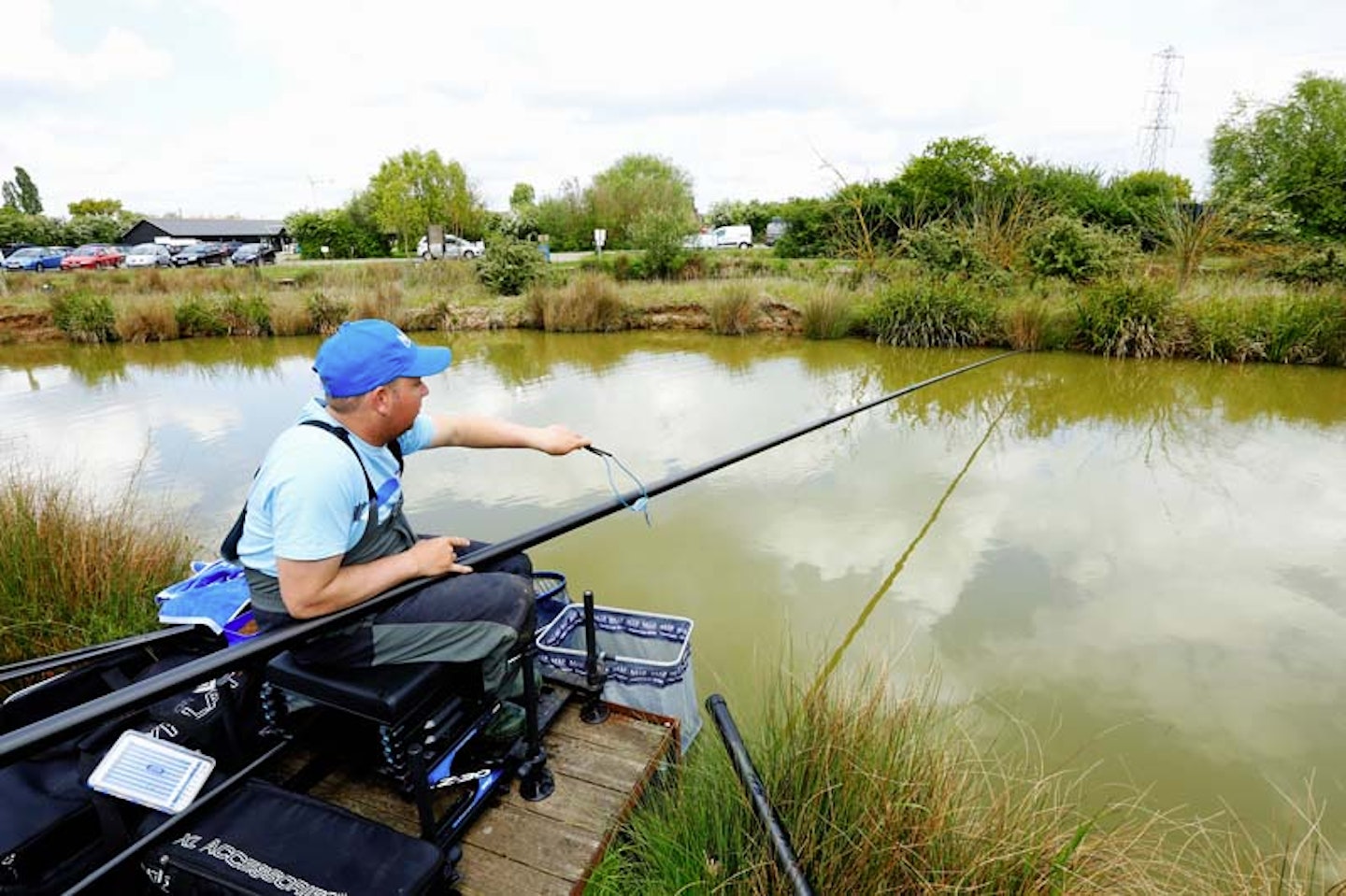On a typical snake lake peg, fishing tight up to the far bank with a bait presented on the bottom can lead to foul-hooked fish.
It’s annoying, and it does the chances of building your peg up no good at all. Is there a remedy?
Most definitely, and it involves fishing shallow. Shallow in 2ft of water? It may sound daft, but far from being the height of lunacy, it’s a tactic that’s given me 200lb match weights from venues such as the Snake Lake at Essex water Puddledock Farm.
This lake has identical-looking swims with a typical 2ft to 3ft of water tight to the far-bank beds of sedge. Although I use the term ‘shallow’, the truth is that I’m going to be fishing at half-depth and looking to catch carp that I can see moving in the swim.
It’s a little bit like dobbing in open water in many senses, getting into a routine of feeding, keeping your eyes peeled and then laying the rig and bait into the path of a carp. Done right, the elastic will be ripped out of the pole with every fish hooked properly in the mouth!
Hold your horses!
My simple plan for fishing shallow is to identify a couple of areas in the peg with sedge or reed cover and fish these – but not from the word go. It takes around 30 or 40 minutes of feeding to get the fish into the area hunting around for the bait. It is vital that you can see the carp moving in the peg to catch them. If there’s no movement, this means there are no carp off bottom and you’d be better off fishing on the deck.
Swapping lines
Having two spots gives me the option to rest swims when the fish have had enough, but I will pick one as my main fishing area, normally one that offers easier fishing and feeding, combined with more cover.
When the bites tail off here, I’ll change to my second area. The rest can do the swim a power of good, with the fish returning within 10 minutes of the change.
How shallow?
Many fisheries have a rule on how shallow you can fish, so for this approach so you may be limited. However, in 2ft of water, 12ins or a little less is ideal for putting the hookbait into midwater. I find that you rarely catch carp just inches deep unless they are actively slurping at the bait on the surface.
Feeding
Bait and feed is hard 4mm pellets, but far from piling in the bait and waiting for the pole to be yanked over I begin by catapulting in 10-15 pellets each time to make some early noise and get the carp mooching around. Once I see a few moving, I cut back to five pellets each time. If this doesn’t work I’ll cut back further to just one or two. Should this draw a blank then I’ll turn to my last resort of a couple of bigger 6mm pellets to make some splash.

Find some cover
The right sort of peg is crucial and I’d want a peg that offers reeds or beds of sedge to act as cover. This will keep the carp feeling safe with the foliage over their heads and also lets me hide the pole tip away from the fish. Try it in a barren swim with just a bare far bank to fish to and it’s never as good.
Simple rig
The float is a tiny 4x8 MAP SF3 pea-type float taking a few No10 shot underneath. This acts more as a sight bob, as when it goes under, the elastic often follows! Lines are 0.18mm Power Optex main to a hooklink of 0.13mm and a size 18 Kamasan B911 eyed fished with a bait band. Elastic is MAP’s TKS Twin Core in the red grade.
.jpg?auto=format&w=1440&q=80)
Hide the pole!
This is the most important part of fishing this way. Put the pole over the heads of the fish and they’ll clear off, so I try and use those reeds or sedges to my advantage and hide the pole in among them.
I basically look, and once I see a carp moving right to left I tuck the pole behind where the fish is moving from and lay the rig in front of it. The pole tip is never put over the top of the fish! Sometimes I may even rest the pole on the sedge itself.
